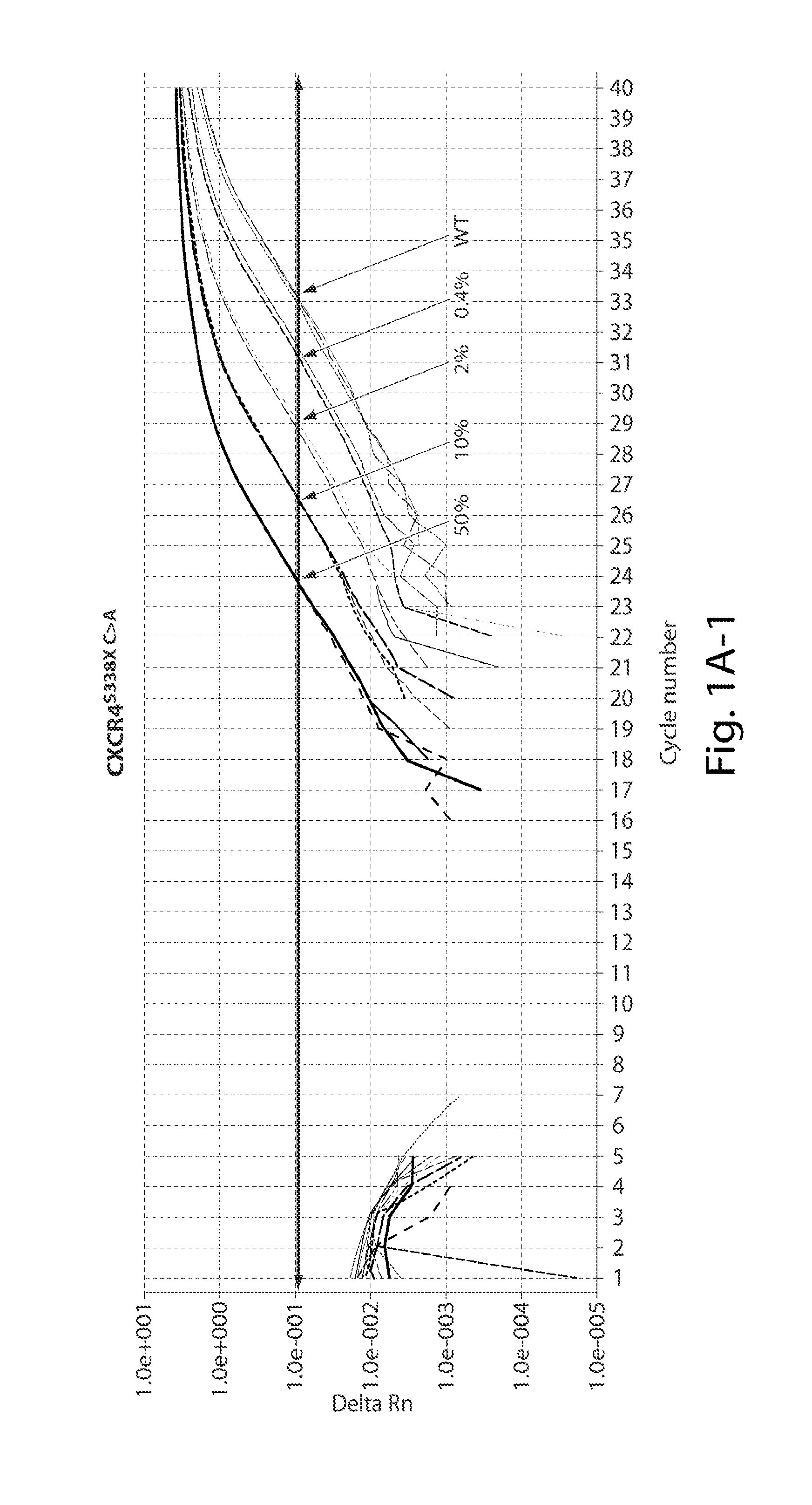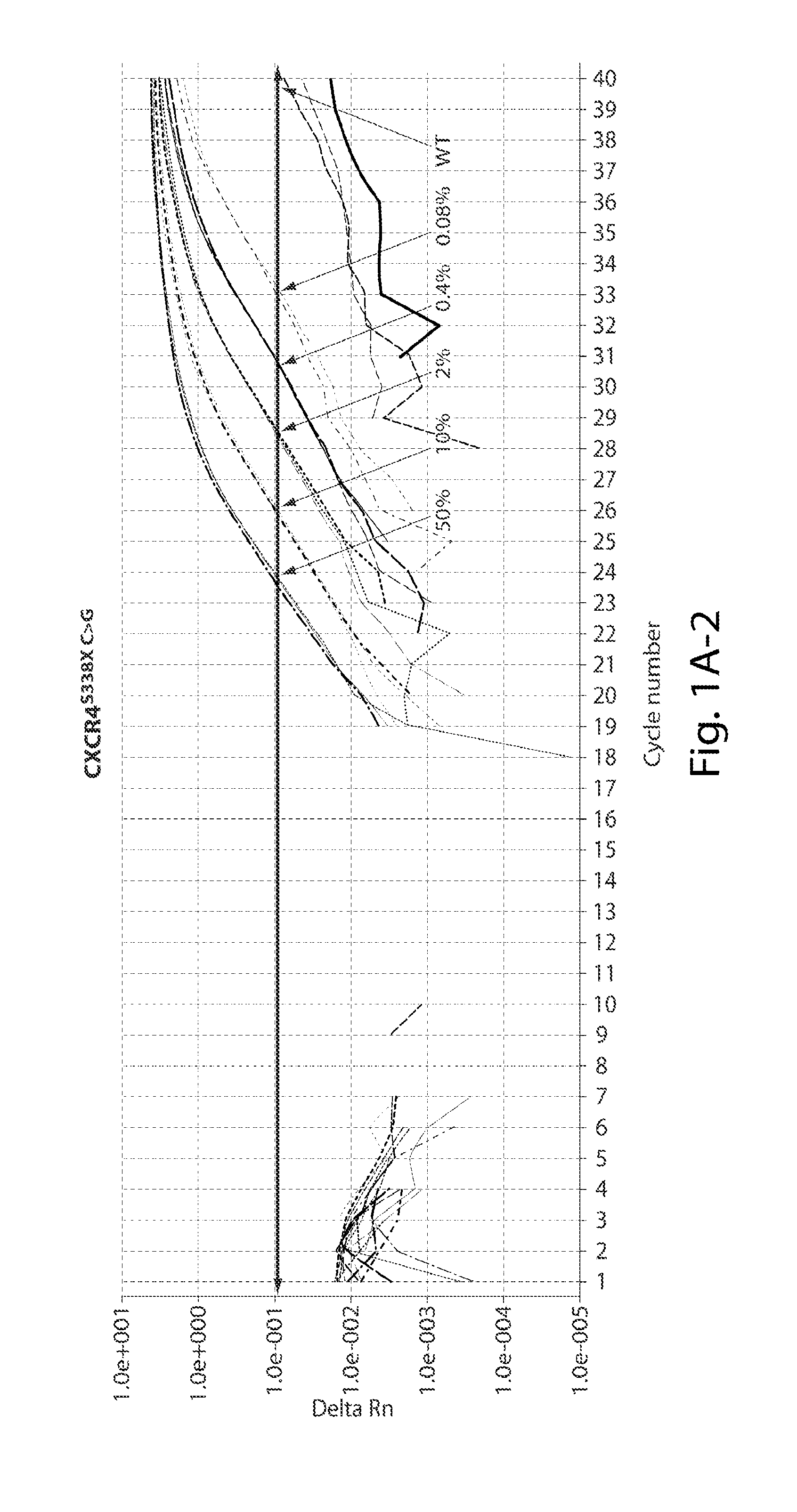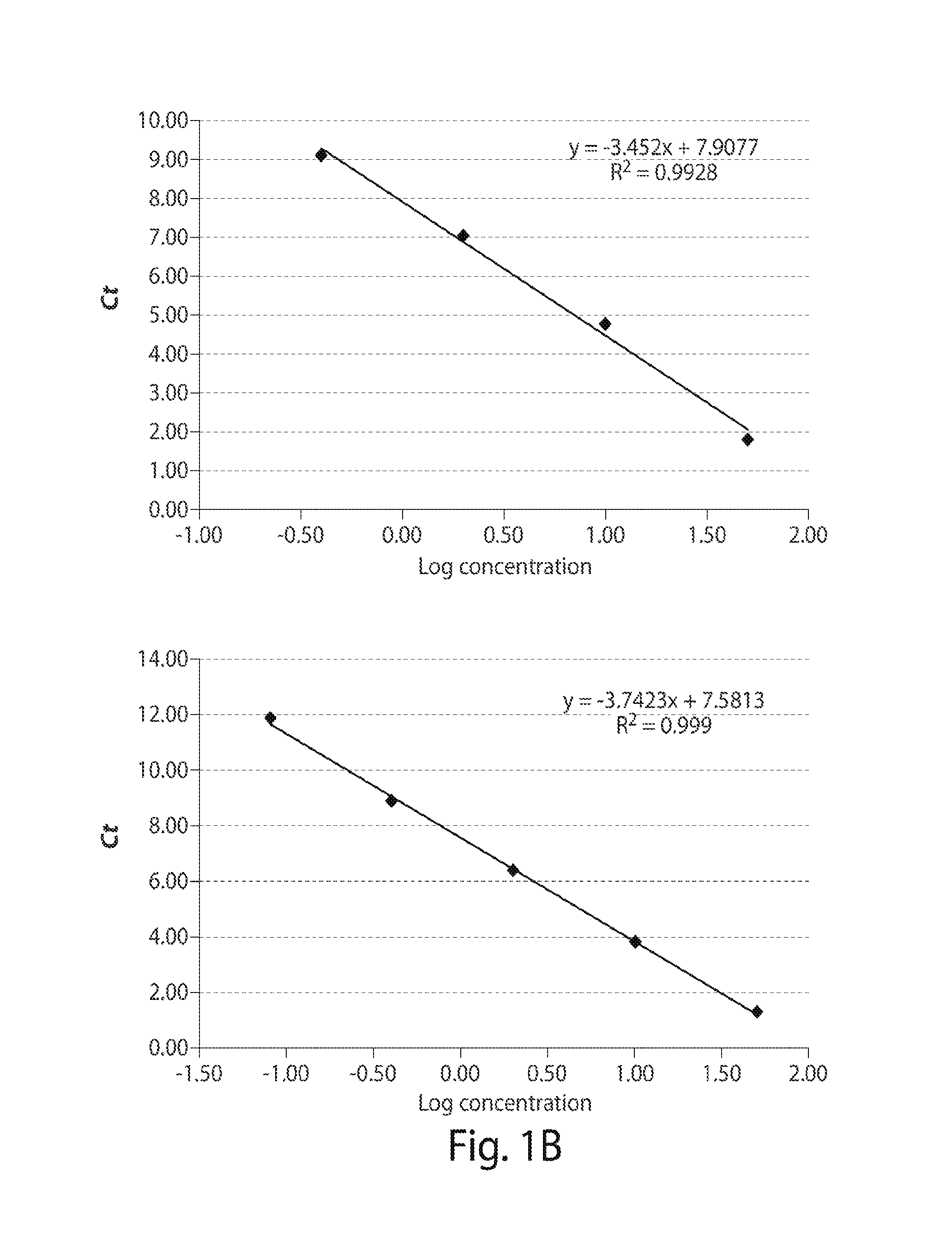Methods for evaluating and treating waldenstrom's macroglobulinemia
a macroglobulinemia and macroglobulin technology, applied in the field of methods for evaluating and treating waldenstroms macroglobulinemia, can solve the problems of reducing the ability to treat waldenstroms successfully, and reducing the ability to detect and treat waldenstroms. the effect of success
- Summary
- Abstract
- Description
- Claims
- Application Information
AI Technical Summary
Benefits of technology
Problems solved by technology
Method used
Image
Examples
example 1
Somatic Activating Mutations in CXCR4 are Common in Patients with Waldenstrom's Macroglobulinemia, and Their Expression in WM Cells Promotes Resistance to Ibrutinib
[0096]Waldenstrom's macroglobulinemia (WM) is an indolent non-Hodgkin's lymphoma characterized by the accumulation of IgM secreting lymphoplasmacytic cells in the bone marrow. CXCR4 is a chemokine receptor that promotes the survival, migration, and adhesion to the bone marrow stroma of lymphoplasmacytic cells (LPC) through interactions with its ligand CXCL12. Through whole genome sequencing, somatic mutations in CXCR4 were identified that affected ⅓ of WM patients. These mutations were identical or functionally similar to those associated with Warts, Hypogammaglobulinemia, Infection, and Myelokathexis (WHIM) syndrome, a rare autosomal dominant genetic disorder that is caused by frame shift or nonsense mutations in the carboxyl-terminal cytoplasmic tail of CXCR4. In WHIM syndrome, loss of the C-terminal tail of CXCR4 impai...
example 2
CXCR4 Mutation Status is Predictive of Patient Response to Treatment with Ibrutinib in WM
[0101]Ibrutinib is a newly discovered drug that is being developed as an anti-cancer agent. Ibrutinib is a BTK inhibitor drug which interrupts B cell receptor (BCR) signaling in lymphomas by selectively and irreversibly binding to the BTK protein, which then results in malignant cell death. This drug has been used in laboratory experiments and other research studies in B-cell malignancies.
[0102]However, based on the knowledge that mutations in the C-terminal tail of CXCR4 conferred resistance of WM cells to ibrutinib in vitro (as described in Example 1), it was hypothesized that patients having such mutations would have reduced or no responsiveness to ibrutinib treatment.
Methods
[0103]Forty (40) WM patients were included in the study. Patients were genotyped to determine CXCR4 mutation status. Baseline measurements for the following clinical parameters were taken prior to treatment: serum IgM lev...
example 3
Development of AS-PCR Assay
Methods
Patient Samples
[0113]Thirteen patients meeting consensus diagnostic criteria for WM, and 12 healthy donors were included in assay development. CXCR4S338X AS-PCR assays were then used to examine bone marrow (BM) and peripheral blood (PB) samples from a separate cohort of WM (n=62), IgM MGUS (n=12), MZL (n=18), and CLL patients (n=32), and healthy donors (n=32). The clinical characteristics for WM and IgM MGUS patients whose disease status was defined based on consensus criteria are depicted in Table 1 shown below. MYD88 mutation status was determined by AS-PCR for all subjects. Subject participation was approved by the Harvard Cancer Center / Dana-Farber Cancer Institute Institutional Review Board. All participants provided written consent. DNA for CXCR4 sequencing studies was extracted from samples as previously described (Xu L, et al. MYD88 L265P in Waldenstrom macroglobulinemia, immunoglobulin M monoclonal gammopathy, and other B-cell lymphoprolifer...
PUM
| Property | Measurement | Unit |
|---|---|---|
| w/w | aaaaa | aaaaa |
| volume | aaaaa | aaaaa |
| size | aaaaa | aaaaa |
Abstract
Description
Claims
Application Information
 Login to View More
Login to View More - R&D
- Intellectual Property
- Life Sciences
- Materials
- Tech Scout
- Unparalleled Data Quality
- Higher Quality Content
- 60% Fewer Hallucinations
Browse by: Latest US Patents, China's latest patents, Technical Efficacy Thesaurus, Application Domain, Technology Topic, Popular Technical Reports.
© 2025 PatSnap. All rights reserved.Legal|Privacy policy|Modern Slavery Act Transparency Statement|Sitemap|About US| Contact US: help@patsnap.com



